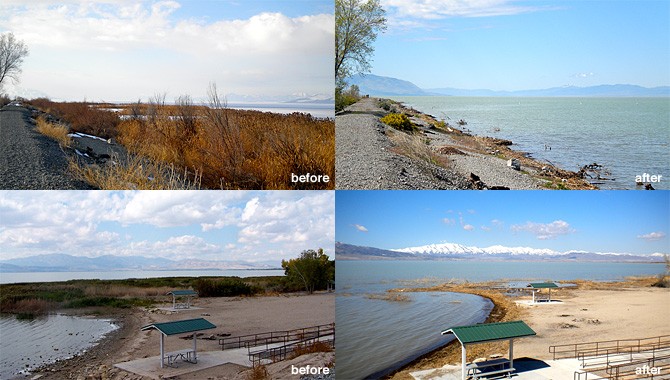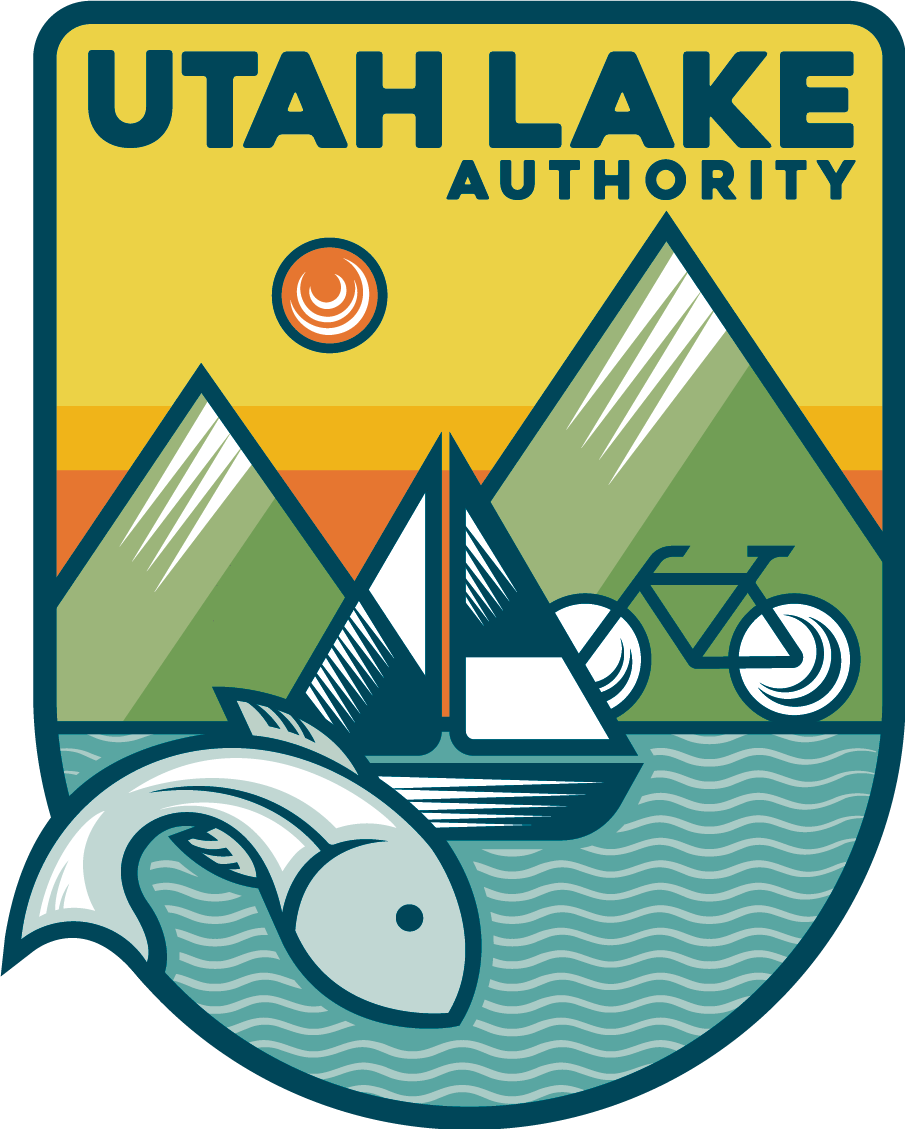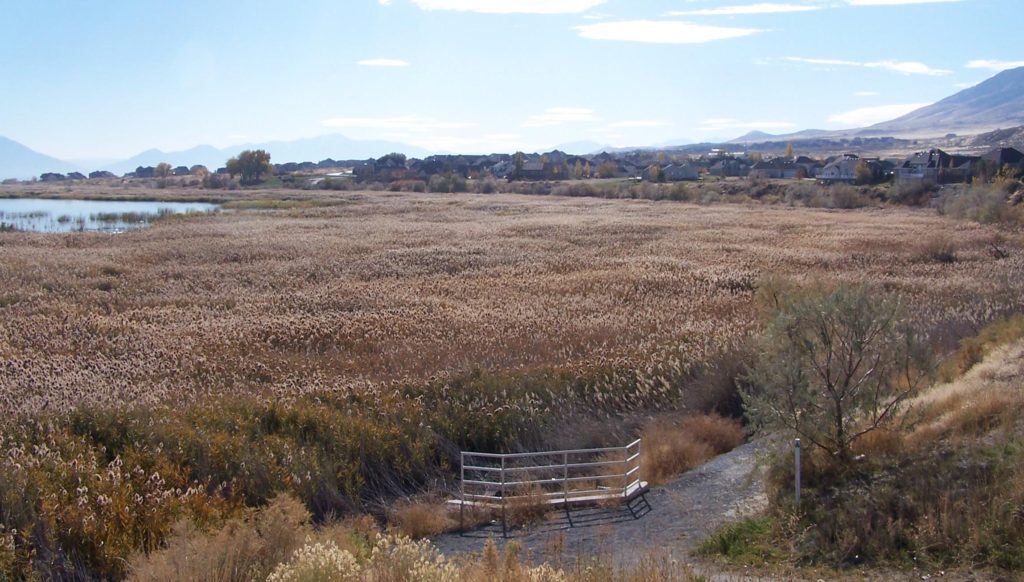A few weeks ago, we published a story highlighting our efforts to restore the shoreline of Utah Lake to a more natural state, free of invasive species–primarily phragmites. Beginning in August, 2011, we will be expanding the project to the west side of Utah Lake in Saratoga Springs.
As detailed in the article, much of the shoreline of Utah Lake has been taken over by invasive plant species including a reed species called phragmites (Phragmites australis), and tree species including saltcedar or tamarisk (Tamarix spp), and Russian olive (Elaeagnus angustifolia). These are ongoing threats in much of the nation and continue to grow in Utah.
One of the goals of the Utah Lake Master Plan, which is the management plan for Utah Lake, is to control and effectively manage invasive species in and around the lake and to minimize their negative effects on the lake’s natural resources. It is our desire to return the shoreline near important recreation areas, access points, and urban interface areas to a more natural state which was prevalent just 15 years ago. It’s a problem we need to begin addressing now!
This project is certain to spark a lot of interest and raise some questions. We’ve addressed some of them below. If you have further questions, feel free to contact us.
Who is involved?
Answer: The Utah Division of Forestry, Fire & State Lands (FFSL), which manages the shoreline and bed of Utah Lake, is working with the Utah Lake Commission, Utah County and other lake stakeholders to restore the lake’s shoreline.
What will be happening and when will it occur?
Answer: Initial groundwork to treat phragmites within a 100 foot minimum buffer zone below the lake trail will begin in early August, 2011. It will continue through much of the winter and into the spring. Residents will see county weed crews working to prepare for the aerial spray that will be conducted sometime in late August/early September.
In late August/early September, aerial treatment by helicopter is planned for approximately 250 acres within Saratoga Bay and near the Saratoga Springs City Marina at the south end of the city. Treatment will be on phragmites growing beyond the 100 foot buffer area below the lake trail, a safe distance from potential damage to any ornamentals, grass, and other desirable plants. We ask that during the aerial spray, which should only last a day or two, the public stay away from the Utah Lake trail.
The herbicide being used on the phragmites is an aquatic-rated glyphosate (similar to RoundUp®) called AquaNeat®. This product was created specifically for aquatic environments. It is most effective when applied after the phragmites produce tassels (seed heads) and begin drawing nutrients into their root system, which is in the late summer, early fall. The treatment regimen is one approved by FFSL, the Utah Department of Agriculture,and the Utah Division of Wildlife Resources. Similar practices are used on other lake and wetland areas around the state.
Mechanical treatment and removal of tamarisk, Russian olive and other invasive trees along the shoreline will take place in the fall and spring. Tree stumps will also be treated with Aqua Neat® to prevent regrowth.
Where will treatment take place?
Answer: This year’s project will focus on approximately 2.5 miles of shoreline in Saratoga Bay and near the Saratoga Springs City Marina at the south end of the city. It will treat approximately 250 acres of phragmites growing adjacent to and in the lake. The following maps show where the treatment will occur.
- Map 1: Jordan River Outlet
- Map 2: Saratoga Bay
- Map 3: Saratoga Springs City Marina
How long will the project last?
Answer: Each section is treated over three years. We expect 80% removal of phragmites after the first treatment; 90% removal after the second; and close to 100% after the third year of treatment.
Will this work?
Answer: A pilot project on 100 acres on the east side of the lake has removed approximately 98% of the phragmites after three years, and a significant amount of tamarisk and Russian olive. The pictures below show the before and after results of those efforts.
Will you burn the phragmites?
Answer: While burning is not an effective treatment method on its own, burning coupled with spraying can be very effective. Given the proximity to structures and concerns about smoke, burning will likely not be used on the project.
How will the dead phragmites be removed?
Answer: On the east side of the lake, most of the phragmites broke down naturally over the three years. Specialized equipment has been purchased to help speed up that process.
How is this project funded?
Answer: A grant through Utah’s Watershed Restoration Initiative was received to cover the costs of the herbicide, aerial application and mechanical removal of other invasive trees. Considerable manpower and coordination is also being provided by Utah County, Utah Lake Commission and FFSL.
Again, if you have further questions, please feel free to contact us.


I am SO excited to have our lake back. I cannot wait to see the results of this huge undertaking! Thank you!
Are their any known health risks or side affects associated with breathing the air after the spraying of the large amount of herbicide being used to kill these plants?
Heather, I hope I was able to address your concerns when we spoke on the phone.
Is there something that we as residents should do during this spray? Stay indoors? What time will the spray be occurring?
Heidi, Sorry for the delayed response. The spray was successful. Though the spray is safe, common sense says to stay away. As I observed the spray early Monday morning, it appeared residents did just that.